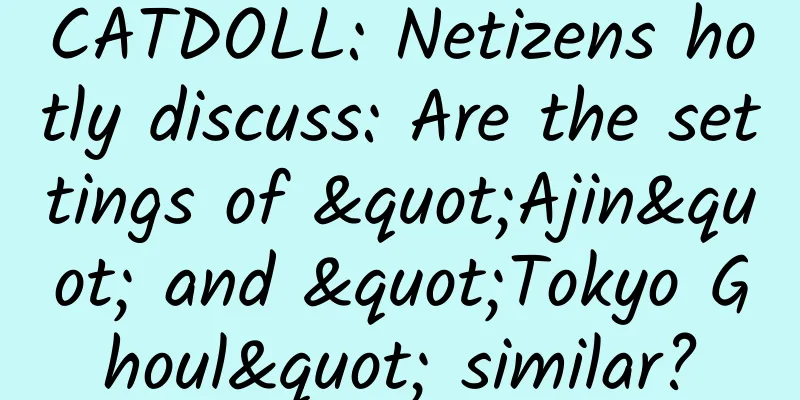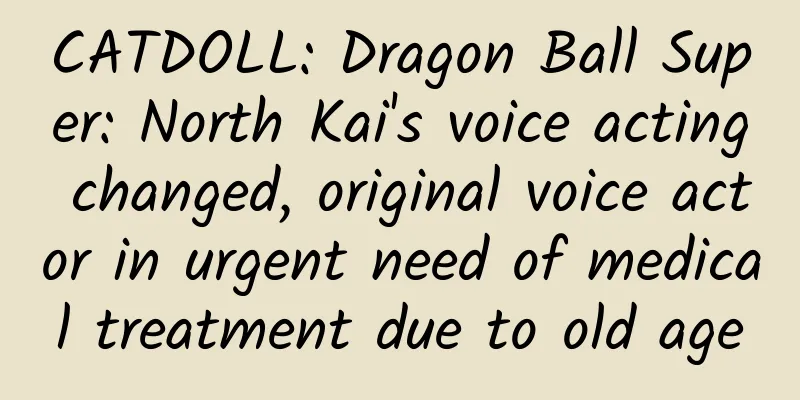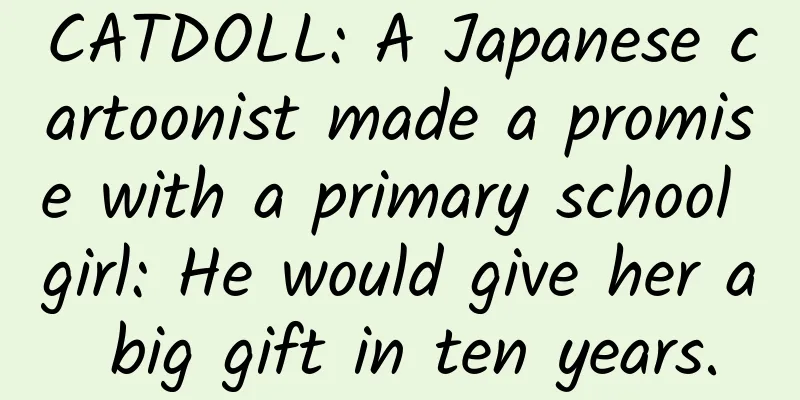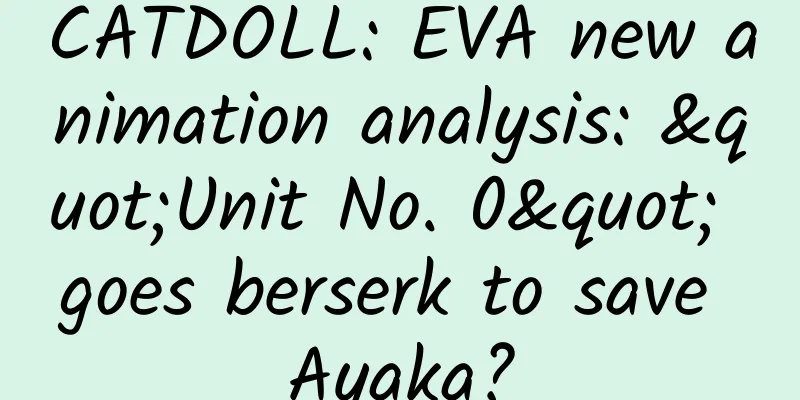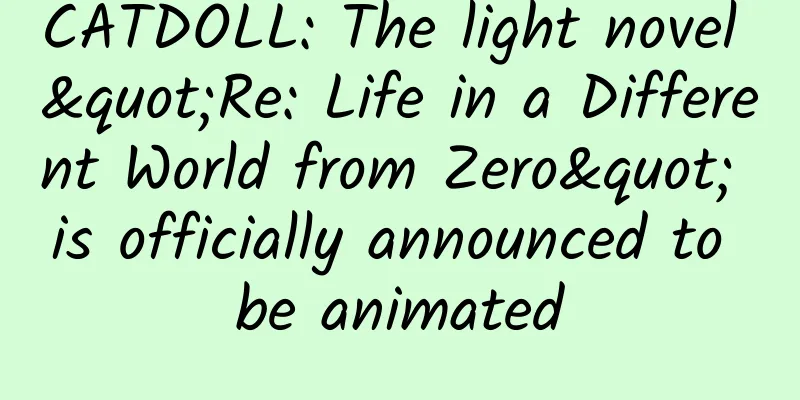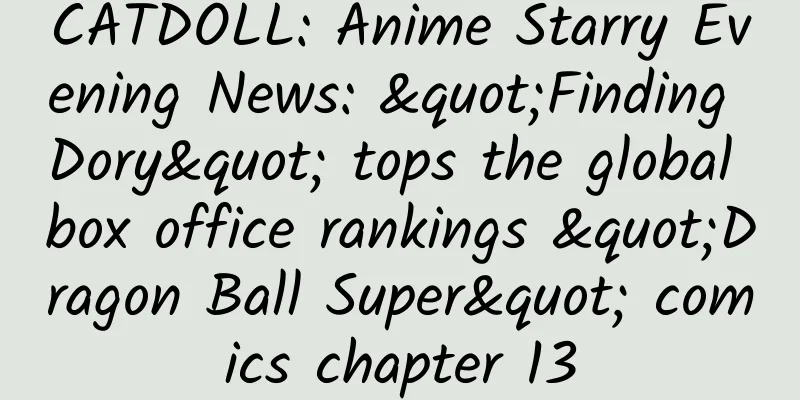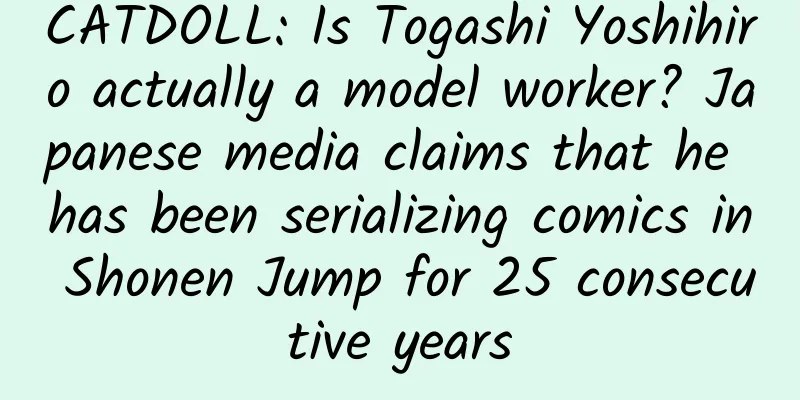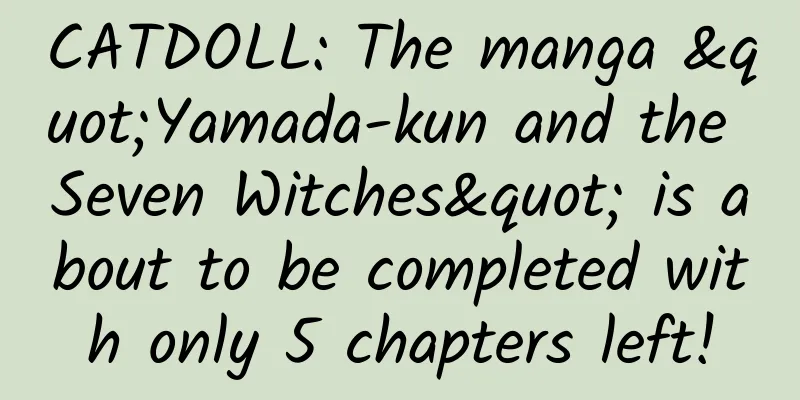CATDOLL: Interview with the director of "Kill! Akame ga Mitsukoshi": I hope the original work can live up to the original
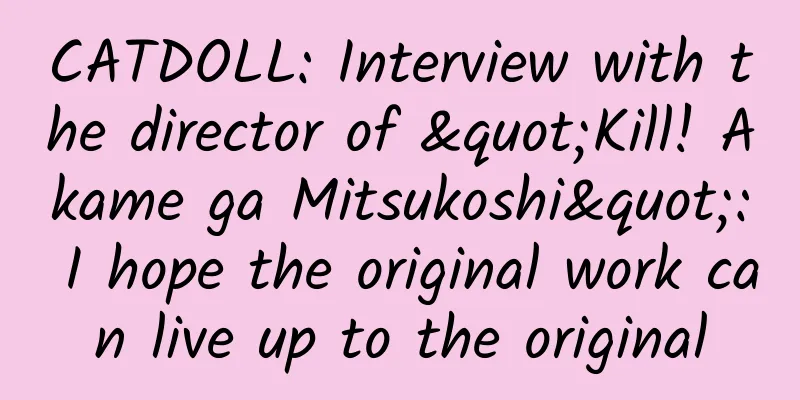
|
The TV animation "Kill! Akame ga Mie" was completed in December 2014. This is a manga adaptation by TAKAHIRO and illustrated by Tetsuya Tashiro. In the story, the young swordsman Tatsumi came to the imperial capital with his companions to help the village get rid of poverty, but accidentally became a member of the killer organization "NIGHT RAID" and fought against the corrupt empire. The story between him and the heroine Akame will become the main line of the whole work... The style of the work belongs to the standard dark series. In addition, the spin-off manga "Kill! Akame ga Mie Zero" is also being serialized, which shows the popularity of the series. However, there are always differences between comics and TV animations. So what are the differences? What is the purpose of the animation to launch original plots during the serialization of the original work? In this regard, a Japanese media recently interviewed the director of the work, Tomoki Kobayashi, to learn various unknown inside stories from him. This work tells the story of the awakening of each character Q: When reviewing the entire "Akame ga Kill!", what kind of story does Director Kobayashi think this is? Kobayashi: If I were to describe it with a phrase that often appears in the work, it would be a story full of "awakening". I think the issue of awakening is portrayed in every episode. For example, when Tatsumi joined "NIGHT RAID", he was tested. Although it was said that he wanted to make the corrupt imperial capital better, a killer is a killer. Whether he can have awakening to what he wants to do is also a challenge for Tatsumi. In episode 22, Akame also said to Will: "Those who are not aware, step down!" It is true. Without awareness, you cannot survive in the work. Q: After episode 19, the work entered the original development of TV animation. Have you communicated with the original author TAKAHIRO about this? Kobayashi: This project started 2 years ago. Although the original story is still in full swing, the animation must tell a story to the end. So no matter what, the animation must end faster than the original. For this reason, we listened to Mr. TAKAHIRO's thoughts on the plot direction and ending, and then we constructed the story. Among them, we decided to "let Tatsumi die in the battle with the First Emperor" and "the final battle will be between Akame and Esdeath." However, after watching the latest original work, I found that some places are also different (laughs). Q: The plot after episode 19 was unpredictable, and I think the episode 23 "Emperor Beheading" where Tatsumi died in the battle with the First Emperor also caused a strong reaction. Many people exclaimed, "I didn't expect Tatsumi to die." Kobayashi: Everyone's reaction is within my expectations. Mr. TAKAHIRO wanted to use this kind of plot from the beginning, and it's fun and shocking. But that was only before. As I said earlier, after reading the original manga recently, I also find it difficult to grasp the direction of the plot. Maybe it's because the animation did this that the original work changed. Esdeath's trump card "Mahabotmo" has already appeared in the original work. At first, I thought the plot would be that Akame would break this trump card and then defeat Esdeath. However, in the latest original work, Tatsumi has already broken Mahabotmo, and Esdeath even said: "I still have a trump card." The animation pushes the story forward according to the original plot, but the comics further incorporate new ideas on this basis, which leads to the current result, right? Q: When an animation has its own original work, as an animation producer, do you often communicate closely with the original author? Kobayashi: It depends on the situation at the production site. For the works I participated in, there were often some people from the original production team on site, and it was rare that no one came to check on the situation. If it is a completely different original development from the original work, then the way of handling the animation production will also be different. However, "Kill! Akame ga Mie" has a very solid original work, and it would be very difficult if the original author did not appear in the discussion meeting. For example, if a new character suddenly appeared, it would waste a lot of time for both the original author and the animation production team, which would not be cost-effective. This is not a finished work, but the plot has to be developed according to the direction of the original work, so close cooperation with the original work is very necessary. This time, because Mr. TAKAHIRO came to the scene to participate in the work, the communication between us became very smooth. Q: Director Kobayashi, have you ever encountered a situation where you had to say, "In animation, I want to do this?" A: The plot cannot contradict the original work. I also care a lot about the picture drawing. Mr. Tetsuya Tashiro, who drew the original work, has a unique style. In order to not damage his style, we also have to study how to present the style authentically in the animation. We put a lot of effort into this. But we worked too hard, resulting in more weight than we imagined... We wanted to emphasize Mr. Tashiro's sense of rhythm, so we increased the number of storyboards. This also put a lot of pressure on the on-site staff, and everyone worked very hard. Q: If there are many shots, how many storyboards are there? Kobayashi: In some episodes with a lot of fighting scenes, we had to add more shots anyway, and the average was over 300. The most was 380 shots in episode 23. If it was over 400, it would still be too difficult, so we tried to avoid this problem as much as possible and ended up with 380 shots. As for the duel between Akame and Esdeath in the last episode, there were also about 380 shots. As long as I think about the rhythm of the comics, I can't help but add more shots. I feel very sorry to the staff for this... Q: Episode 23 and the final episode are very important episodes for both fans and staff. And the First Emperor was only designed in the animation. Kobayashi: At first, there was no design in the original work, and I heard from Mr. Takahiro that he really intended to use the portrait of the First Emperor. From the initial setting, the bronze statue of the First Emperor was built and then activated as an imperial tool. When I thought about "I have to design the First Emperor", I thought that it would be difficult to move a huge bronze statue in human form in the form of a picture, so I changed it to the appearance in the animation while incorporating the original setting. Q: The First Emperor is really huge. So how big is the First Emperor? Kobayashi: It's not completely finalized (laughs). I didn't decide on the size in the setting, I just made it look big. Depending on the situation, sometimes in some shots, even if the First Emperor looks 400 meters tall, it's not strange at all. We prioritize the shape, and the animation broadcasts the scenes with some shots that can give people an oppressive feeling. I hope to create a picture that is not inferior to the original Q: The work has always been developed from Tatsumi's perspective, and when I knew that the subtitle of the last episode was "Kill! Scarlet Eyes", I also thought "It's finally here!" Kobayashi: The last episode had to be like this. Including the original work, the plot of "NIGHT RAID" is almost all from Tatsumi's perspective, but I thought, "In the end, the focus should still be on Akame." Although the title is "Kill! Akame no Mi", Akame is a relatively honest character, and it is difficult to see her perform actively. This "protagonist has no role" approach also reflects some self-torture NETA elements (laughs). Since Akame seemed a relatively perfect character from the very beginning, there was no special focus on portraying her struggles and growth. Q: In episode 22, “Kill! Sister”, the story between Akame and Kurome is worth the price of admission for Akame fans. Kobayashi: If you read the prequel, Akame ga Kill! Zero, you will have a deeper understanding of their story. To be honest, there are still some parts that are difficult to explain with just the animation. So I hope everyone will read "Kill! Akame ga Kill!" Zero. If the animation is a completely original development, then we might create a story centered on Akame and Kurome, and the plot of episode 22 may be placed in the last episode. It is only because of the existence of such an indisputably powerful enemy character as Esdeath that the current story is possible. Q: Although every character in the work is full of personality, Esdeath's presence is still unique. Kobayashi: Esdeath is also a very popular character in the original work, and Mr. Takahiro seems to like her very much (laughs). Regarding Esdeath, we also encountered an unexpected situation, which was in episode 14 "Kill the Giant Dangerous Species". The image of Esdeath created by Mr. TAKAHIRO is different from similar characters in general animation. If you want to portray a character like Esdeath in an animation, it is easy to make her a character with obvious emotional ups and downs. Although she looks very strong, she also has a weak side and a gentle side, which makes her full of human touch. However, Mr. TAKAHIRO thinks that Esdeath is a flawless character. Just like the name, it is an "S". In episode 21 in particular, everyone was having a headache with the story. What kind of emotions should Esdeath have when she found out that the captured Tatsumi was an enemy? What would Esdeath think when Tatsumi was executed? In this situation, it became very difficult to think about the character's actions. Q: Let's talk about the voice actors. This time, both Akame and Tatsumi are voiced by newcomers, while the rest of "NIGHT RAID" are all professionals with absolute strength. I find this arrangement quite interesting. Kobayashi: The reason why we gathered a group of professionals was actually quite accidental. Tatsumi is the youngest in "NIGHT RAID", in other words, he is like a small employee in the company, so from the perspective of a voice actor, I think it is better not to subvert this position. Sometimes, during dubbing, the difference in status will also be reflected in the work. Since Tatsumi is a character who is bullied by people around him, I think it would be best if a young person dubbed him. Thinking of this, I think Mr. Saito Souma fits the requirements very well, so I tend to use him. As for Ms. Amamiya Sora, who dubbed Akame, I can also feel a good sense of freshness from her. Q: Now that all 24 episodes have been aired, how do you feel when you look back on this time? Kobayashi: Hmm~ It’s been a long time! (laughs) The project started exactly two years ago, and the animation ended in December last year. When it came to the final stage, the schedule seemed a bit rushed, and it would be great if we could complete the work more smoothly. This is really a work that the staff worked very hard on. I mentioned the level of effort in episode 23 before. Under very difficult circumstances, the staff performed very well. If I have the opportunity to see this scene again, I will be very happy. Q: The staff's dedicated performance was indeed conveyed through the screen in the last scene. Kobayashi: For the first half, we tried to avoid destroying the original work as much as possible, but for the second half, we didn't have the original manga, so we were very troubled when drawing. To be honest, since the original manga was still being serialized, I thought at that time that I couldn't lose to the original. There are many things in the original work that I think are amazing. After finishing the storyboard, we still encounter this situation in a very tight schedule: after entering the drawing stage, we get the original comic again and find out that "the original work has such a plot." So we look at the original work and modify the picture again. When Seurat died, the minister said, "Oh, he's dead, so he's dead." This plot precisely illustrates the problem: animation can't achieve the same effect as the original work. It has to be said that Mr. Tashiro's technique of creating pictures is really great. Q: Finally, please say a few words to our readers. Kobayashi: Personally, I was impressed by the story of Chelsea in episode 17, "Zan! Jubind". I hope you can watch it again. I will be very happy if you can enjoy the work again through Blu-ray and DVD. Q: Thank you for accepting our interview today! |
<<: CATDOLL: The animation of the comic "Forbidden Curse" has started
>>: CATDOLL: Giants fight naked! Osaka 4D Cinema in Japan opens "Attack on Titan" experience zone
Recommend
CATDOLL: October new show "There is a corpse buried under Miss Sakurako's feet" Yuriko's character design is announced
The TV animation "Miss Sakurako's Body B...
CATDOLL: The plot of the animation "Osomatsu-kun" prompts the audience to imagine that the story takes place in the afterlife?
The new October anime "Osomatsu" was re...
CATDOLL: The old man died again. The information of the 367th episode of the series "The Prisoner of Food" was revealed
Information about the latest chapter 367 of the p...
CATDOLL: KanColle is no match for Jianman, Touken Ranbu tops the popularity list of web games
DMM.com, which successfully entered the game indu...
CATDOLL: The next issue of the comic "Soul Catcher(s)" will have a very big announcement
The manga Soul Catcher(s) currently being seriali...
CATDOLL: July new show "GANGSTA Gangster" released the latest promotional painting
The animation "GANGSTA Gangster" is sch...
CATDOLL: "Food Wars! Soma" manga 178th chapter advance picture and the Ten Greats face off
The preview image of the 178th episode of "F...
CATDOLL: Kamen Rider Ghost's second rider Spectre's final form and exclusive weapon revealed
The currently popular special drama "Kamen R...
CATDOLL: Yo-kai Watch's performance surpasses classics and saves the Japanese toy industry
In the first half of fiscal year 2014, the Japane...
CATDOLL: "Prison School" TV series will be broadcast late at night in October. Director Iguchi Noboru is a good man.
The new July anime "Prison School" is a...
CATDOLL: The sixth volume of the manga "How to Raise a Boring Girlfriend" is on sale. The senior sister with long black hair is as beautiful as a painting.
The sixth volume of the popular work "How to...
CATDOLL: Anime Starry Sky Evening News: Big Fish and Begonia Press Conference is approaching, Key Club Star Dream News
Good evening, everyone. It's time to review t...
CATDOLL: "Bleach" Chapter 681 Illustrated: I'm low on health and I'll heal you one by one to rekindle my will
Ichigo gets help from Tsukishima and Ginjo to res...
CATDOLL: "Girls und Panzer" movie releases the latest PV, the military god is heroic
The animated film "Girls und Panzer" wi...
CATDOLL: New pictures of Yoshihiro Togashi's "Hunter x Hunter" appeared, and Lao Zei asked for a re-publication
Yoshihiro Togashi is known as the "genius&qu...
